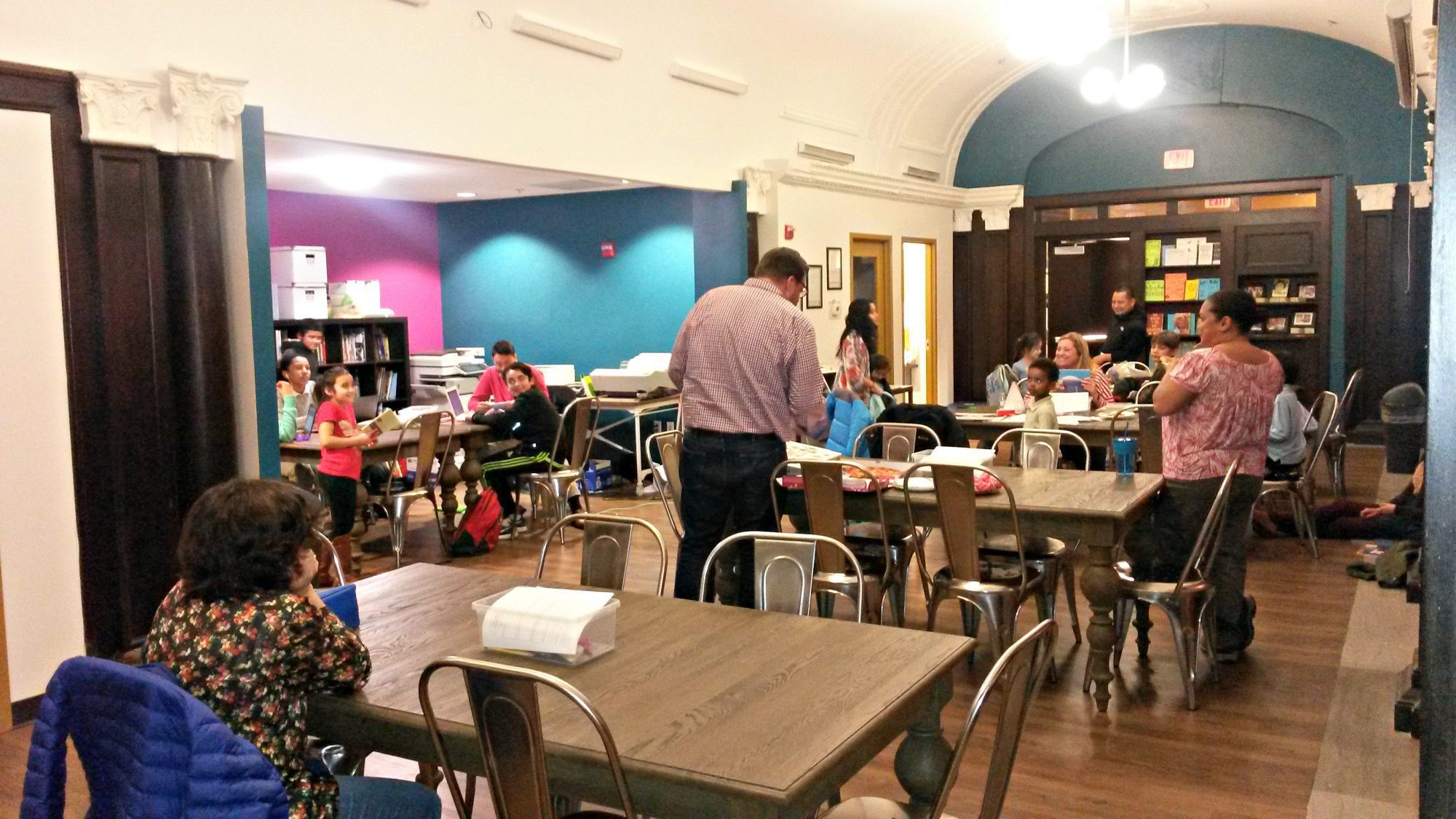By Olive Sherman, 826DC Intern, January 2017
The first time I set foot in the Venice location of 826LA, I immediately felt cool. It was in an old police station, and what might have been bullet holes decorated the door that led to the room where my workshop would be held. I was twelve-years-old, and I marveled at what was written on the chalkboards and how clever that was—this was before blackboards started appearing everywhere, I think. They made their own giant calendar on the wall. I saw pictures of kids holding up books they were published in, and I was so surprised.
When we left, my dad and I couldn’t stop talking about that space, how we couldn’t classify it and how that made us love it even more. The room itself, with its many sunny windows and its bygone schoolhouse décor, was all my father, an architect, needed to know that 826LA was a special place. “But Miss O, can’t you tell that cool stuff happens there?” he persists.
A few years down the line, we learned that 826LA belonged to 826 National. We visited the 826 Valencia’s Pirate Store and learned about its history and the author-trickster Dave Eggers. At 826 Valencia, my mom, the other architect, fell in love, and she told all her LA friends visiting San Francisco about the writing tutoring center-turned-tourist attraction.
In our nation’s capital, 826DC Tivoli’s Astounding Magic Supply Company, which resides in the old Tivoli Theatre, is no exception to 826 National’s rule of surprising excitement. The Tivoli, an Italian Renaissance Revival structure built in 1924, was considered the most elegant movie house in the DC area in its day. Its detailing—the two illuminated TIVOLI signs, an ornate overhang for the ticket booth, classical murals and detailing on the interior ceiling—remain intact for 826DC students and volunteers today. It makes being at 826DC feel like a secret treat, to be in a beautiful old space where you humbly work on writing that could be revolutionary because look at where you’re writing at it.
I climb a regal staircase to get to 826DC’s storefront and office space. There’s something about climbing, about obscurity, that makes spaces more fun and exciting. When I climb the 826DC steps, my imagination goes all over the place. All at once, I’m going to my seat at the opera or up to a tree house, or to the dressing room of a ballerina. I’m going to a magic store, but also I’m going somewhere else that makes me feel free and new and creative. On that staircase, I transition from the busy and grungy outside world to a wonderland.
At the top of the stairs is Tivoli’s Astounding Magic Supply Company, 826DC’s storefront that inspires creativity and introduces students and passersby to the undefined space that 826DC is. The store, DC’s “only illusionarium and de-lux haberdashery” sells everything a magician might need to hone their craft. From magic wands to juggling balls to an antidote for stage fright, there’s great stuff in stock for students and anyone else interested to peruse and purchase (and chuckle at). The magic store conveys 826DC’s whimsy and humor. It establishes 826DC as a place where people are interested in wacky ideas and alternate realities, because what is silliness if not just reality?
I pass through the store to get into 826DC’s office/recreational space. I can enter either by a small secret door that I open by tilting the head of a puppet, or through a door thinly-disguised as a fun-house mirror. Maybe it goes without saying that these doors act as a kind of portal, and their secrecy only adds to this magical quality, where knowing the key to the riddle gets you into a room of magenta and teal. It makes the space feel more precious because the greater public has not solved the puzzle, but you have.
The office space retains the Corinthian detailing from the original interior of the old Tivoli Theatre. Leafy cornices line parts of the ceiling and atop each dark wooden column are curly-decorated capitals painted white. The Italian Renaissance Revival contrasts with other more modern aspects of the room—the northern and southern walls are painted magenta, while the eastern and western walls are painted teal blue. A hallway that leads to more office space is the color of a dandelion or a yellow raincoat. Youthful color choices amplify the sentiments of 826DC’s commitment to a younger generation that might otherwise be drowned out in a space that holds antique architecture so dear.
I work with 826DC students at four big wood tables, and we sit in metal farmhouse chairs like those you would find at a fancy delicatessen in Brooklyn, NY. Books, of course, line the walls, and those most prominently displayed are the ones written by 826DC students themselves. One room gives way to a lounge-y space with a couch and plush green chairs. “Look at how comfortable our space is!” yells the furniture. “Look at how we are a visual symbol of a supportive environment. Let us cradle you, feel free to be comfortable and take your coat off,” it all says. This is a safe space.
When I leave 826DC, I know it is a place where we do a different kind of work than what we do for our classes or for our big bosses or for our editor. 826DC’s walls scream loud, “THIS WORK IS FOR YOU!” Here, there are no grades and there are no tests, but there is work, and it will be hard and fun and most of all warm. Here, everyone grows.

